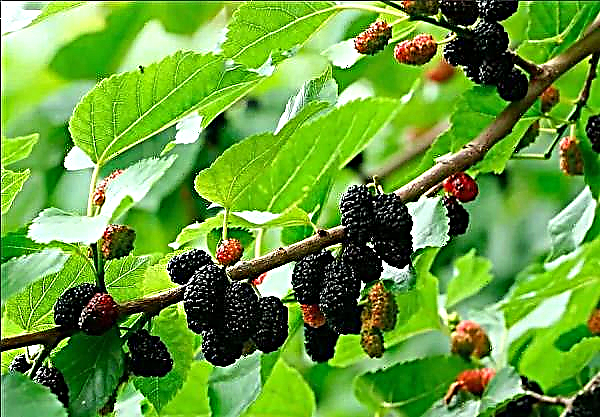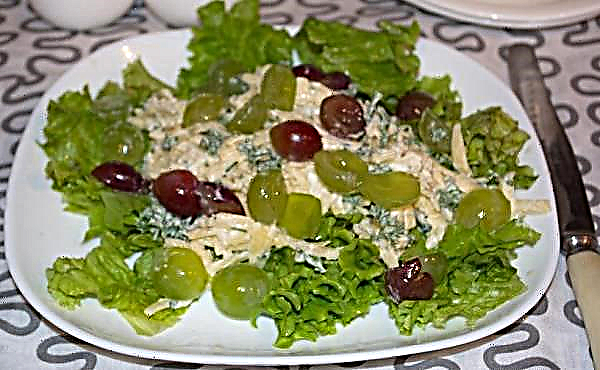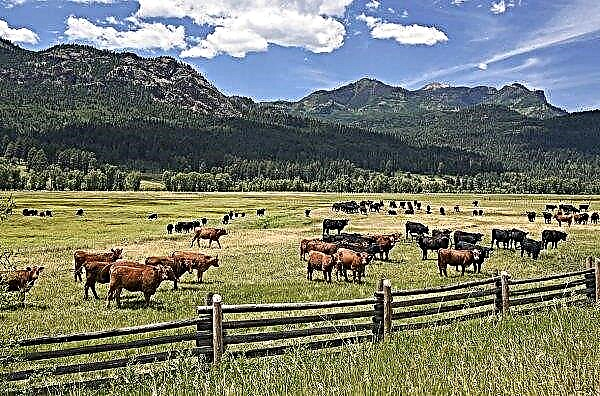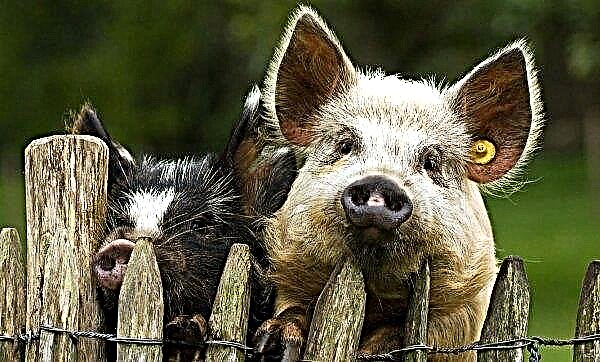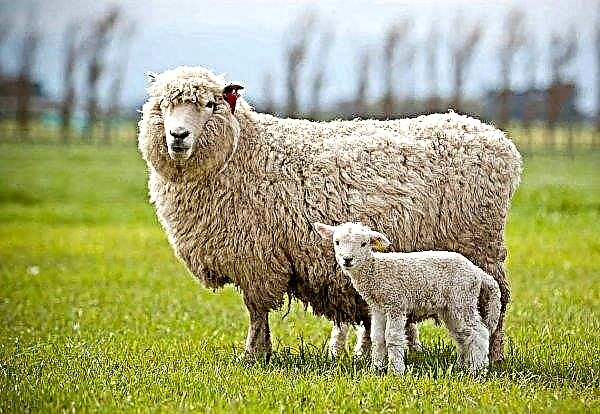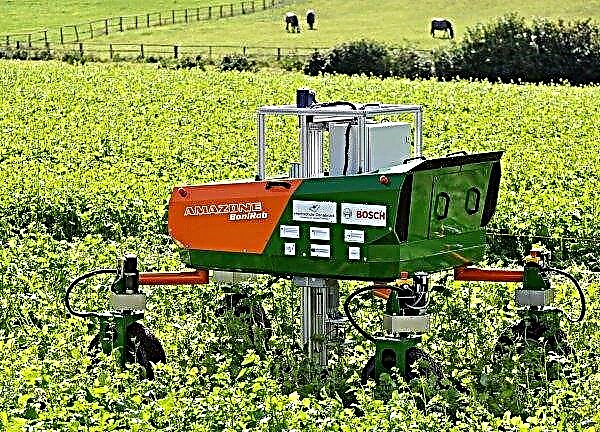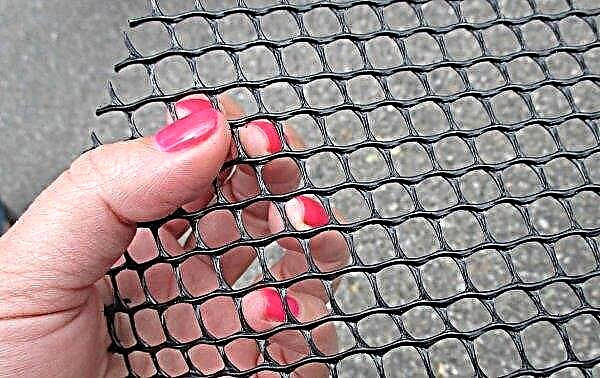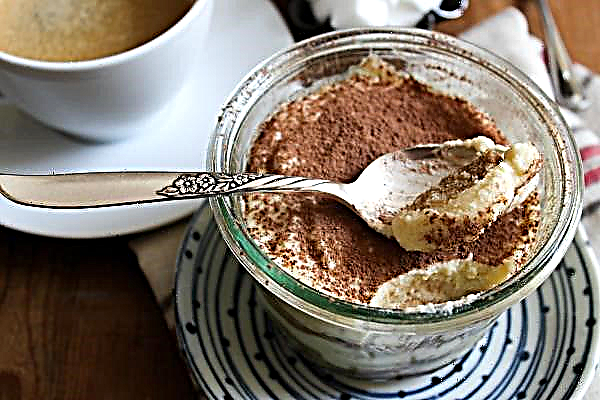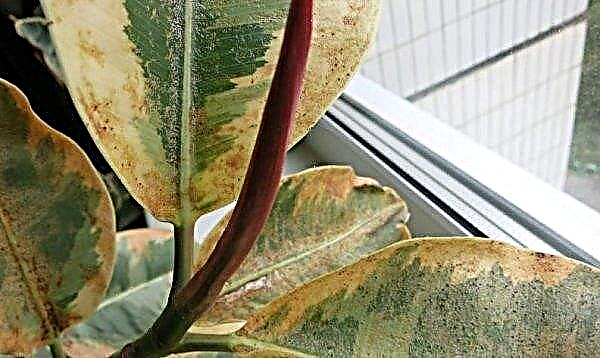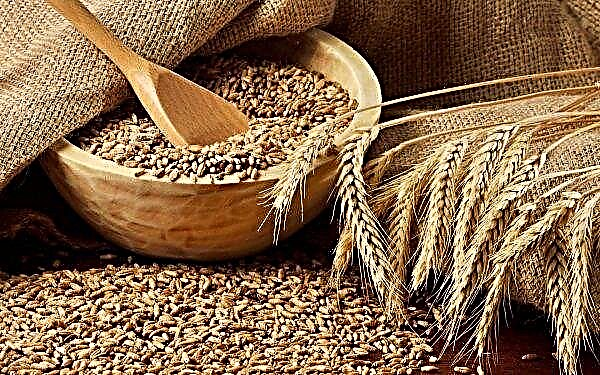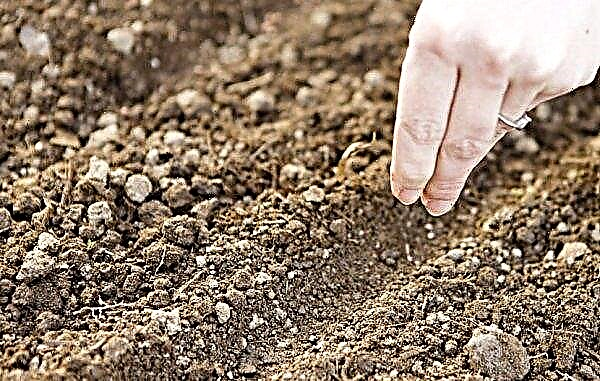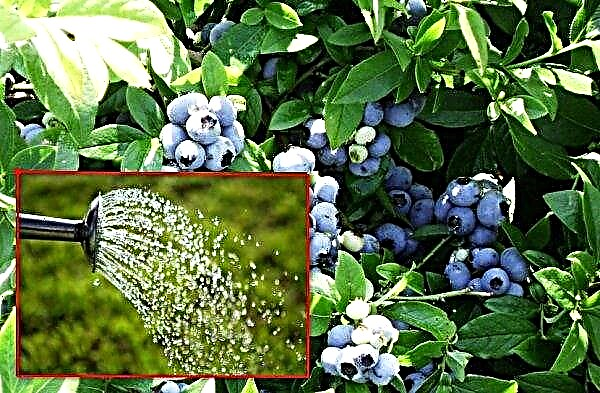Canadian or bluish spruce native to the forests of North America. Cultivated in cultivated since the XVIII century. Among varietal diversity, dwarf forms are distinguished and Echiniformis is one of the most popular. The following is a detailed description of the plant, as well as recommendations for the care, reproduction and use of spruce in landscape design.
Botanical Description
Echiniformis is a variety of Canadian spruce or gray spruce (lat.Picea glauca Echiniformis), which, in turn, is a species of the genus Spruce from the Pine family. Known since about 1855, in some sources refers to French breeding. The translation of the Latin name - “the form of a hedgehog” characterizes the appearance of this spruce.
Did you know? Spruce needles are a valuable vitamin raw material used in the preparation of feed additives for livestock.
The plant has the following botanical characteristics:
- height 0.6 m, crown diameter up to 1 m;
- slow-growing, per year - up to 2 cm in height and up to 3 cm in width;
- bush-like form with a flat, pillow-shaped or rounded crown;
- shoots are stiff, dense and short, about 2 cm long;
- needles located radially, bluish-green in color (5-7 mm), young growth is light green.
Spruce of this variety is unpretentious and belongs to the third zone of frost resistance, withstanding up to -40 ° C.
Landing
When choosing a site for planting, it should be borne in mind that the plant is photophilous, but can also tolerate light partial shade. Spruce does not have strict requirements for soil composition, it grows on acidic and alkaline soils, least of all “loves” sandy soil. Due to the surface root system, a site with a high level of groundwater occurrence may also be suitable, however, in this case, a drainage layer must be provided. Most often, the seedling of spruce when sold is in a container.
Important! Container plants can be planted from early spring to late autumn, and dug out seedlings from April to May or from mid-August to October.
Buying a conifer with an open root system is not recommended, especially in the markets. The nursery can offer plants for digging, and in this case the earthen lump should be moistened and wrapped in burlap, and the subsequent planting should occur as soon as possible. Shortly before placing the plant in the ground, an earthen lump must be watered, it was easier to transshipment.
Placing spruce seedlings in a new place should take place as follows:
- In the selected area, you should dig a hole deeper and wider than the root system of the seedling about 2 times.
- If necessary, pour a layer of expanded clay or crushed stone at the bottom of the pit, then lay a mixture of fertile and garden soil to half the volume of the hole.
- Carefully remove the seedling from the container, taking care not to disturb the roots. Place pits in the center and cover with earth. The root neck of the plant should be at the level of the soil surface, without deepening.
- Water the planting abundantly and mulch the trunk circle (peat, bark, etc.).
 In the first winter, it is recommended to cover the spruce in any suitable way (agrofiber, the construction of a canopy from cardboard, etc.), and in early spring it is imperative to shade from the bright sun.
In the first winter, it is recommended to cover the spruce in any suitable way (agrofiber, the construction of a canopy from cardboard, etc.), and in early spring it is imperative to shade from the bright sun.
Video: how to plant Canadian spruce
Spruce care
Canadian spruce is unpretentious, but you can get a full-fledged decorative plant, observing the basic rules of care. The correct vegetation conditions are especially important for young seedlings in the first years after planting.
Watering and feeding
A young plant will be required to be watered; an adult spruce will have enough natural precipitation (with the exception of long dry periods). The plant loves sprinkling, in which water abundantly moistens all the needles. For successful wintering, practice water-loading irrigation in late autumn.
Coniferous plants do not need constant feeding, these crops are better not to “feed” than to add an excessive amount of nutrients. Optimal will be the use of special fertilizers for conifers within the time specified in the instructions. The introduction of manure or nitrogen mixtures is strictly unacceptable.
Loosening and mulching
The soil under the spruce should be covered with a layer of mulch. Such an agricultural technique maintains the necessary moisture and air permeability of the soil, inhibits the growth of weeds and provides protection against temperature changes in winter.
An ideal shelter for conifers is a bark of different fractions, rotted sawdust or peat, you can use ordinary hay. Loosening is recommended with extreme caution so as not to damage the rhizome. The optimal depth is about 5 cm. It is advisable to coincide with the procedure to replace the mulching layer.
Pruning
Trimming spruce is performed to give it the desired silhouette or in violation of the natural (varietal) form. It happens that dwarf plants throw shoots with powerful growth. Such reversals should be removed in the first year of life. The best way to control the contours is to pinch a young growth in early summer, while the needles on them have not yet blossomed.
Crown cleaning
The density of the Echiniformis crown makes it difficult to clean and thin out, but this procedure is necessary. In an adult plant, the internal branches dry out and decay, and mites can form in the formed dust. Work is carried out in dry weather.
Important! Since pruning causes injuries on the shoots, a subsequent disinfection of the entire plant with copper preparations is carried out.
Cleaning should be done with protective gloves; inhalation of particles of dry residues of the plant should also be prevented (you can protect yourself with a gauze bandage). Gently spreading the crown with his hands, dry needles and shoots are removed. The resulting litter must be removed from under the spruce.
Winter preparations
In addition to water-charging irrigation, special plants for winter are not required for adult plants. To maintain the shape of the crown with significant snow cover, you can use metal mesh (netting), which is set in a ring around the plant. At the end of winter, plants should be shaded from bright sunlight. You can use special covering materials, burlap or install a shading shield (compact size makes this possible).
Video: preparing conifers for winter
Possible diseases and pests
Although conifers have fewer diseases than many other cultivated plants, they are difficult to determine.
The most common problems are:
- Fungal diseasesfrom which weakened plants most often suffer. They can develop under snow during the thaw and inside the thickened crown. Branches dried up in the spring are an occasion to review the growing conditions. Such diseases can be treated with copper preparations by regular spraying (in spring and autumn).
- If moisture stagnates, it may develop. root rot. The disease often manifests itself on clay soil in a cold, protracted spring. Signs of the problem will be poor development of spruce by mid-summer, softened roots with an unpleasant odor. A diseased plant is dug up and the root system is disinfected, cutting off the affected parts. Then the spruce is transplanted to another place, and the previous one is treated with any fungicide.

- Rust accompanies planting conifers near pome crops. A characteristic sign of the disease is outgrowths up to 5 mm in bright orange color that occur on shoots in early summer. From this growth on the bark, spores spread to the leaves of fruit trees, where they grow and form brown spots. At the end of the cycle, spores from the leaves again showered on spruce. At the first signs of illness, the branches are removed and burned, and the Christmas tree is treated with Bordeaux liquid or other special preparations (Tseneb, Ditan, etc.).
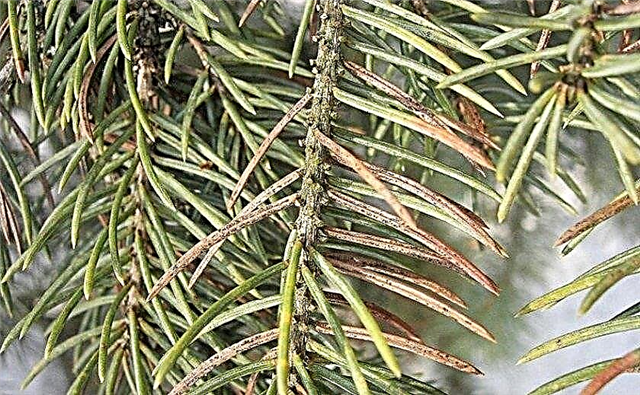
The most dangerous pests for Canadian spruce:
- spider spider mite, whose appearance can be seen when brightening the needles, its loss of luster. In the future, the needles become covered with yellowish spots, dry out. If you look closely, you can find a thin cobweb along which ticks move. For the fight using acaricidal drugs ("Actellik", "Sunmight" and others.);

- spruce false shield causes browning and decay of needles, drying out of shoots. Larvae leave brilliant traces of secretions (when eating plant juices). Spruce trees planted in shading on dry soils are most susceptible to this pest. The fight against false shields is carried out by spraying with insecticides in the early spring, and with a significant lesion - with repeated manipulation in late summer;
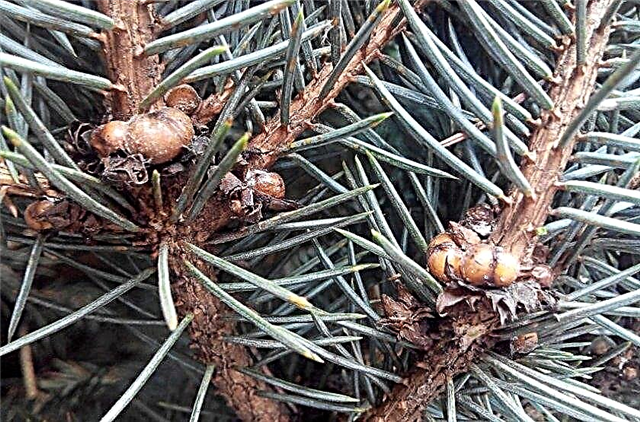
- spruce sawfly larvae eat young needles. At first, it becomes red-brown and for a long time keeps on the shoots. Digging of near-stem circles is effective, spraying with decoctions of insecticidal plants, processing with chemical preparations;
- if the spruce buds are eaten from the inside, blame should be spruce kidney sawfly or spruce moth caterpillar. External damage indicates the operation of the weevil. Control measures are in line with previous recommendations.
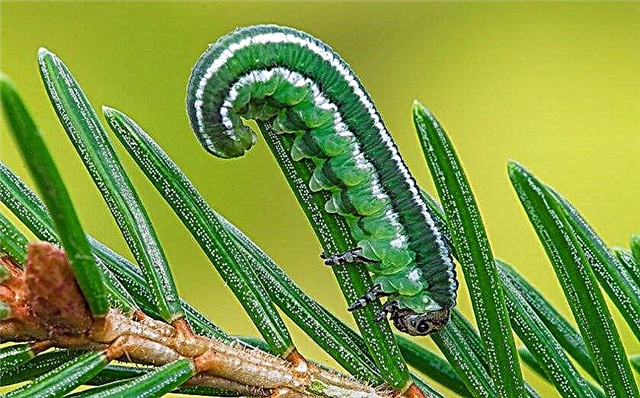
Breeding methods
Coniferous plants propagate by seeds, cuttings and grafting. Vaccination is used in commercial nurseries to obtain special forms, and the seeds do not guarantee the preservation of varietal traits, so gardeners prefer cuttings. For rooting, a small greenhouse with a mixture of sand and peat should be prepared and constant monitoring of planting material should be ensured.
Did you know? Spruce wood is used in the manufacture of musical instruments. The Italian masters Stradivari and Amati made from them the soundboard of their violins.
The Cherenkov algorithm is as follows:
- From the beginning of summer, the cuttings with the “heel” - part of the wood - have been cut. For spruce Echiniformis, a length of 2-3 cm will be sufficient.
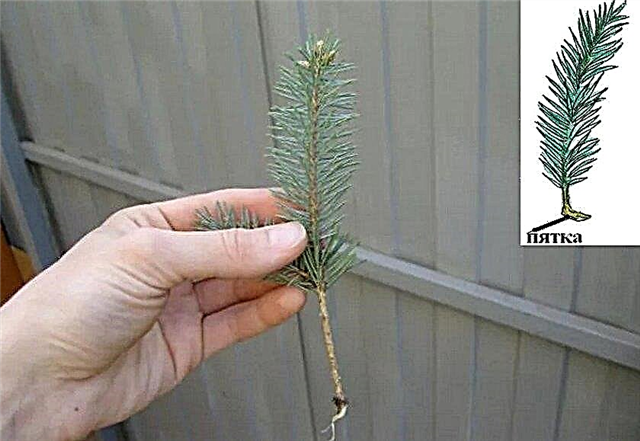
- Then process the slice "Kornevin."
- The cuttings are buried in the soil mixture, and the greenhouse is closed with a lid or film. Inside, constant humidity is maintained by regular spraying.
- Rooted cuttings are suitable for planting the next year. Plants are placed in a constant place when lateral shoots appear on them.
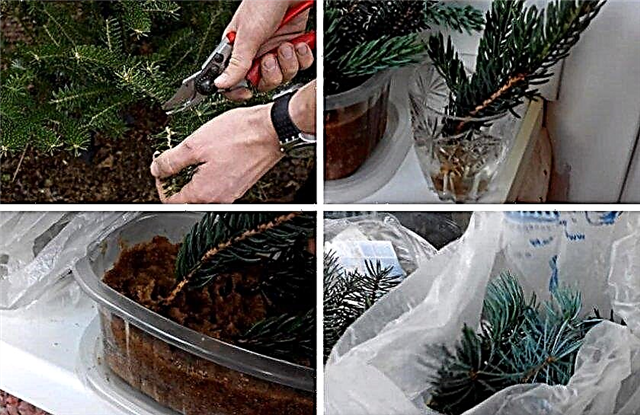
The use of wood in landscape design
Dwarf spruce looks great in oriental-style gardens, rockeries and on alpine hills. The small size allows you to grow this representative of conifers in compact areas or in the foreground of a large coniferous group. You can plant a spruce in a container near the entrance to the living room. Canadian spruce Echiniformis deserves to occupy a dominant position in any collection of conifers. Due to its unpretentiousness and dwarf size, it is suitable for growing even for beginner gardeners. Providing basic care, you can get an attractive ornamental plant with evergreen needles.
Canadian spruce Echiniformis deserves to occupy a dominant position in any collection of conifers. Due to its unpretentiousness and dwarf size, it is suitable for growing even for beginner gardeners. Providing basic care, you can get an attractive ornamental plant with evergreen needles.








